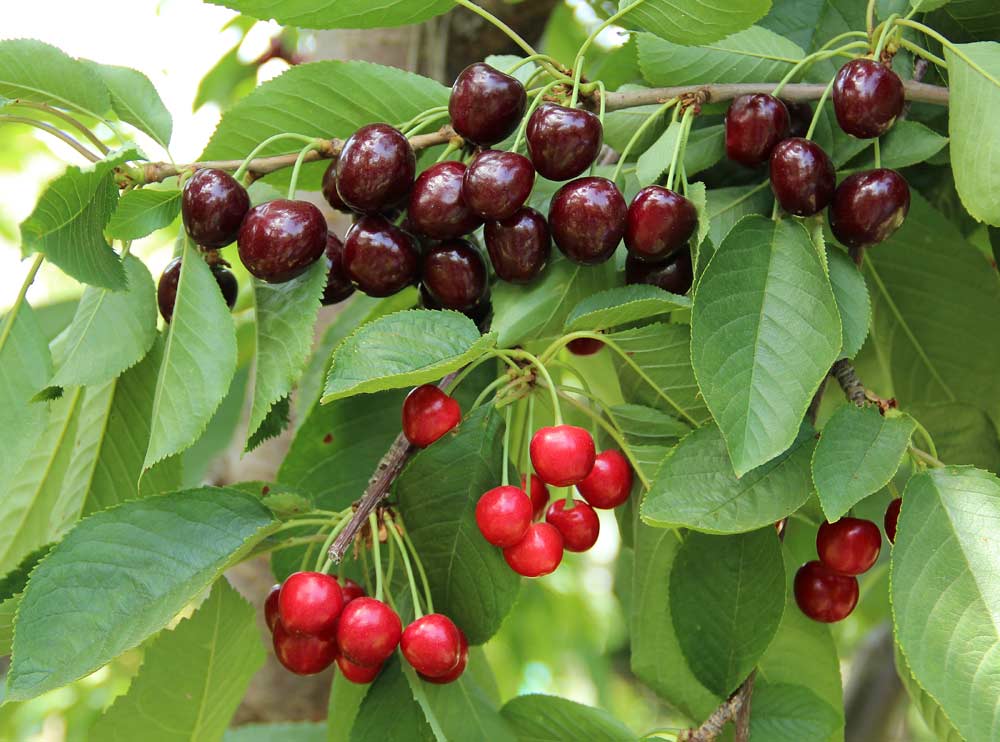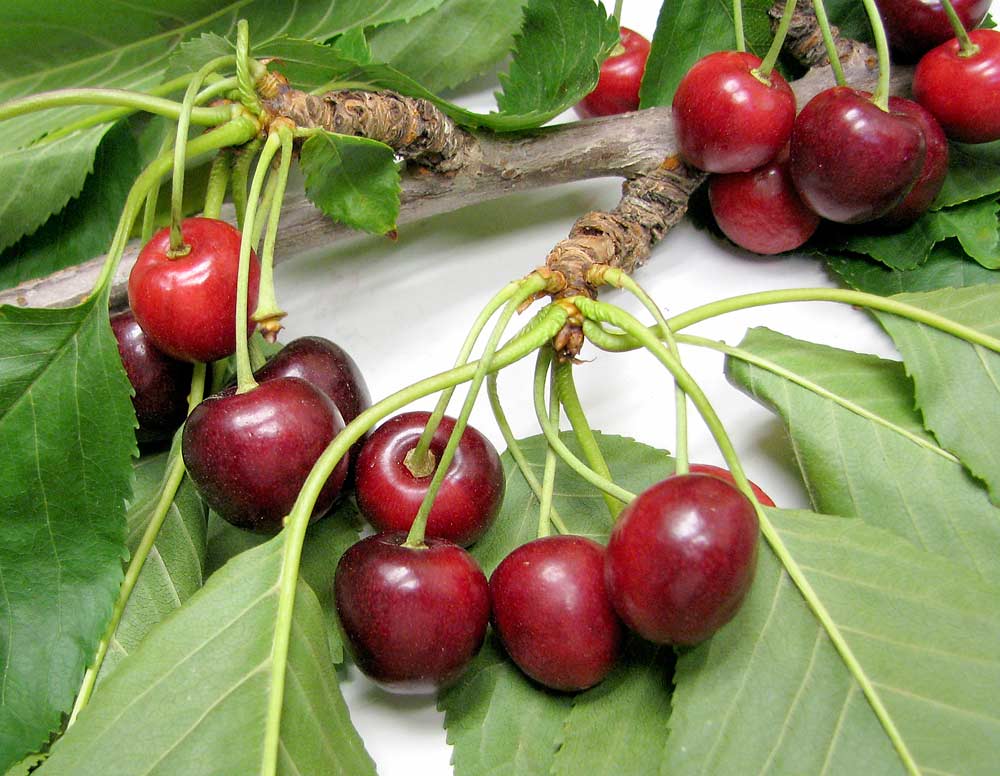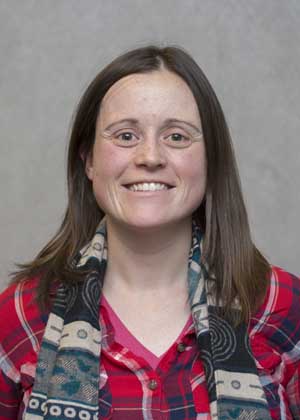There are five common and serious pathogens of sweet cherry in Washington, but one remains the biggest concern for growers: little cherry disease.
Trees infected with little cherry disease produce small, poorly colored cherries that lack sugar and have a bitter flavor, and by the time they show symptoms, it’s often too late to save the tree.
The little cherry virus strain 1, little cherry virus strain 2 and Western X, a bacterium that clogs the vascular system of a tree, cause the disease, though only the latter two have been found in Washington. Western X accounts for about a third of infections; the rest have been attributed to little cherry virus 2.
There is no cure once a tree gets the virus, so growers need to be vigilant in scouting their orchards and removing infected trees, said Scott Harper, a plant pathologist and director of the Clean Plant Center Northwest at Washington State University’s Irrigated Agriculture Research and Extension Center in Prosser. He spoke to growers at the Cherry Institute in January.
“You can either live with it or ignore it, which I don’t advocate. The disease may get progressively worse. That then becomes a reservoir, a source to spread to neighboring fields,” he said. “Take the tree out and deal with the problem.”
At the meeting, Harper joined Hannah Walters of Stemilt Growers’ research and development team in offering tips for handling the disease.
Prevention and identification

Bing Cherry with Little Cherry Virus 2. (Courtesy Andrea Bixby Brosi, Washington State University)
Little cherry virus 2 is unique and very particular in that it infects only sweet and sour cherries. That limited host range is good news, unless you’re a cherry grower.
However, the lack of reservoir plants outside of the orchard simplifies management, Harper said. A project to monitor movement of the disease in plants is ongoing; in addition, researchers aim to identify which tissues in the plant should be sampled to reduce the chance of false positives and negatives. So far, they’re finding there is fluctuation by season.
In the meantime, Harper urged growers to develop an integrated disease management plan rather than spray and hope it “takes care of everything.” That means growers should not propagate from known or suspect blocks and only use plant material that has been certified free of viruses; identify and remove infected trees and spray for the key vector, mealybugs, as a protective measure; don’t move equipment between infected and uninfected blocks; clean pruning tools between plants; and randomly test blocks for viruses annually.
“Often when you see symptoms in a plant, there’s really no point in testing the plant. It’s diseased, you know about it,” he said. “The focus should be on testing two to three plants beyond it to see if it has spread.”
Harper also said growers should work with their neighbors on disease management.
A grower’s perspective

These Sweetheart cherries are infected with little cherry disease are light red and smaller in size than healthy fruit. Little cherry disease results in small, poorly colored fruit that lacks flavor or is bitter. (File photo courtesy Washington State University)
Because a tree can be infected for years before it starts to show symptoms, scouting for the disease — on foot — is key. Symptoms of both little cherry virus and Western X are best seen one to two weeks before harvest; cherries don’t size and often lack color and have a bitter or bland taste. Infections can be found in clusters of fruit or fruit on an entire tree, but there are no leaf or tree symptoms.
In terms of successful scouting, the more single cluster infections found the better, because that usually means it’s a newer infection, said Walters of Stemilt.

Hannah Walters
Stemilt typically has two to five people scout every acre of cherries on foot, walking the rows and scanning trees. Suspect trees are recorded with GPS units and flagged with tape and an orange number tag for recordkeeping in case they need to be cut down after harvest. GPS also allows the company to track movement of the disease over time. Workers will circle back later to collect samples — 10 mature leaves in the summer or shoots from 1-year-old wood in the winter (five cuttings per tree, each 8 inches long).
Growers should try to collect leaves from around symptomatic fruit, and if there is no symptomatic fruit, gather leaves from each leader to represent the entire tree, she said. Samples can be processed with small RPA kits if a grower has the ability to process them or sent to the Clean Plant Center for more accurate PCR tests.
Whether Stemilt elects to remove a tree or an entire orchard varies by block to block and is dependent on several factors: Is the block making money? How old and productive are the trees? What is the market timing and quality of the fruit? Are there other infected orchards in the area? Should a replant of apples, pears or another cherry variety be considered?
For single tree removal, growers should cut the top off, drill holes, apply Roundup and grind up the trunk. If there are symptoms in neighboring trees, they should be cut down as well. For whole orchard removal, growers should spray to kill all roots and remove them, then fumigate and avoid replanting immediately.
Vector control also must be emphasized to control for spread of the disease. Where mealybugs are the vector, control is determined by whether the orchard is seeing apple or grape mealybugs.
A research trial by Washington State University researchers found that a combination of Lorsban (chlorpyrifos) and oil or Centaur (buprofezin) and oil were most effective at the delayed-dormant stage for apple mealybugs; growers should note that Lorsban is also highly toxic for natural enemies to the apple mealybug. Diazinon worked best at controlling newly hatched crawlers later in the summer.
For grape mealybug, systemic compounds Admire Pro (imidacloprid, soil drench) and Ultor (spirotetramat) and oil, applied 14 days after petal fall, showed the best results.
Horticultural oils and neem oils are recommended for organic use.
Leafhoppers, which are the vector for Western X, are best controlled in spring or fall after cherries have been harvested, rather than through indiscriminate sprays. Growers should also manage alternative hosts of both the Western X phytoplasma and of the leafhoppers, including clovers, dandelions, curly dock, bitter cherry and chokecherry, according to WSU researchers.
Broad leaf weeds may be difficult to eliminate from an orchard entirely, but by suppressing them, the orchard becomes much less attractive to leafhopper vectors. •
—by Shannon Dininny






Leave A Comment